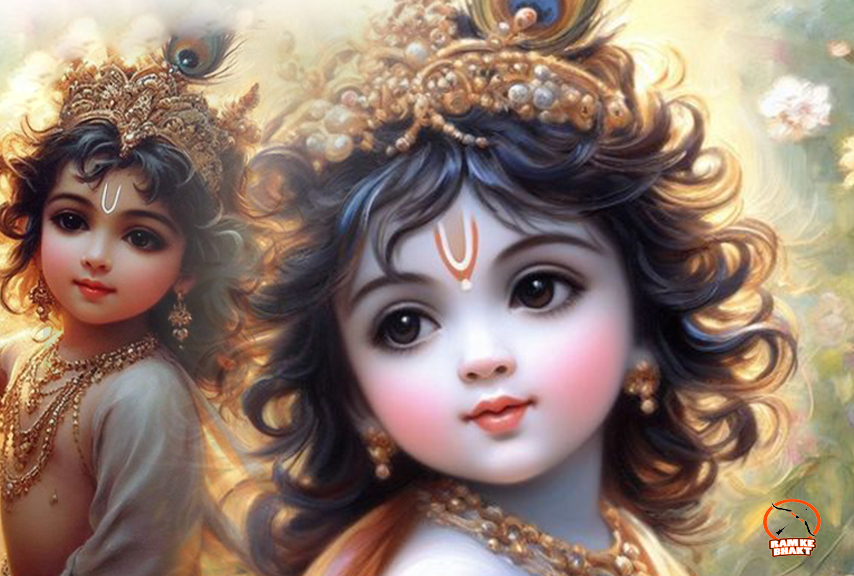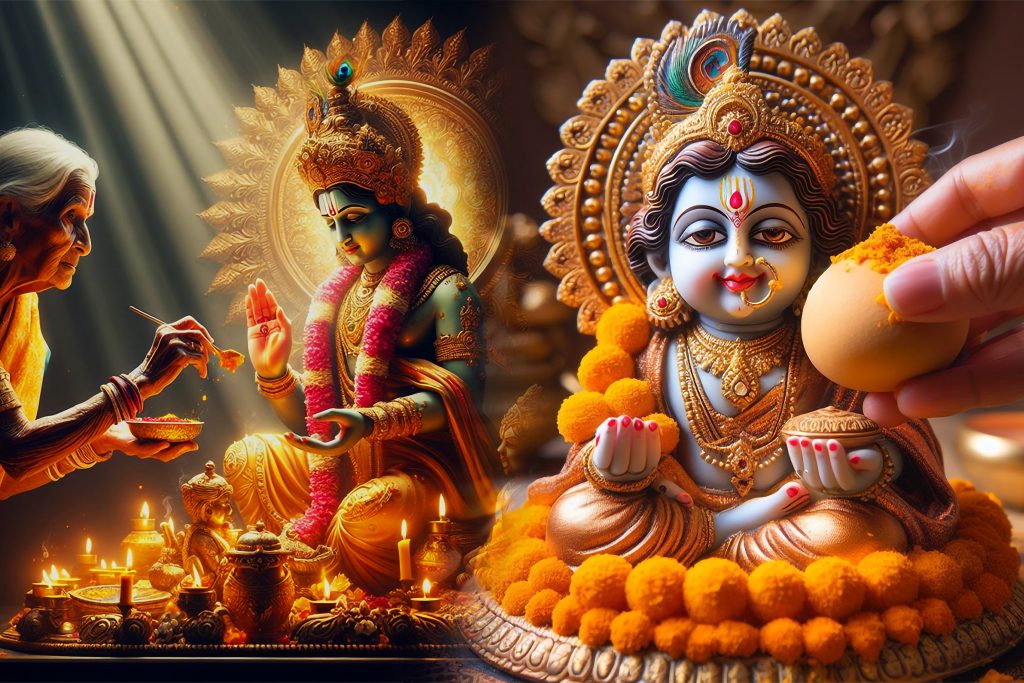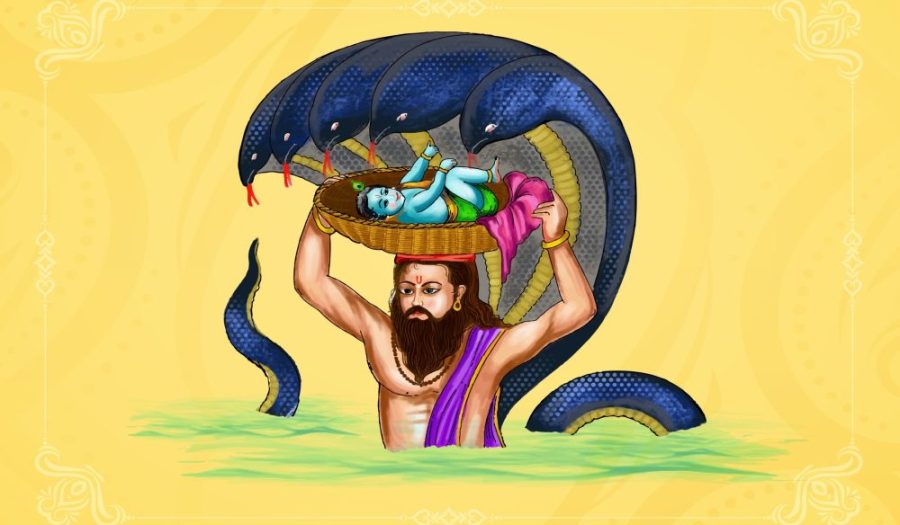
In the vibrant tapestry of Hinduism, the worship of deities holds a sacred place, offering devotees a profound connection with the divine. Among the myriad forms of God, the worship of Laddu Gopal, also known as Bal Gopal or Krishna, is particularly cherished.
Laddu Gopal, the mischievous and enchanting child form of Lord Krishna, is often depicted holding a laddu (sweet) in his hand, symbolizing sweetness and joy. Worshiping Laddu Gopal involves not just rituals but a deep spiritual connection that transcends the material world. In this article, we explore the best ways to worship Laddu Gopal, inviting divine blessings and fostering a meaningful relationship with the playful Lord.
Understanding the Significance
Before delving into the ways of worship, it is crucial to understand the significance of Laddu Gopal in Hinduism. The divine child Krishna is revered for his playful and charming demeanor, symbolizing the innocence and purity inherent in every being. The laddu, a sweet confectionery, represents the sweetness of devotion and the joyous nature of the divine. Worshiping Laddu Gopal is believed to bring prosperity, happiness, and spiritual fulfillment.
Creating a Sacred Space
The first step in worshiping Laddu Gopal is creating a sacred space dedicated to the deity. This can be a small altar adorned with flowers, incense, and other auspicious items. Place a beautiful idol or image of Laddu Gopal in the center, ensuring it is clean and well-maintained. The sacred space serves as a physical manifestation of the devotee’s devotion and creates a conducive environment for spiritual practices.
Daily Rituals and Pujas
Regular rituals and pujas form the backbone of Laddu Gopal worship. Devotees often perform aarti (ceremonial worship with light), sing bhajans (devotional songs), and offer food, especially laddus, to the deity. The daily routine establishes a connection with the divine, fostering a sense of discipline and devotion. The act of offering laddus symbolizes the devotee’s surrender and desire for sweetness in life.
Dressing Laddu Gopal with Love
Dressing the idol of Laddu Gopal is an act of devotion that goes beyond the physical realm. Devotees often change the attire of the deity, choosing vibrant and auspicious colors. Traditional outfits like the peacock feather-adorned pitambar or the classic yellow attire are popular choices. Dressing Laddu Gopal with love and care symbolizes the devotee’s desire to adorn the divine with the best.

Engaging in Leela Smaran
The stories of Krishna’s leelas (divine exploits) are an integral part of Hindu mythology. Engaging in leela smaran, the contemplation of Krishna’s playful deeds, is a powerful way to connect with Laddu Gopal. Devotees can read or narrate the stories of Krishna, meditating on the profound teachings embedded in his actions. This practice not only deepens the understanding of the deity but also cultivates virtues in the devotee’s life.
Observing Fasting And Ekadashi
Fasting, especially on Ekadashi (the 11th day of the lunar fortnight), is a common practice among Krishna devotees. Ekadashi, considered particularly auspicious for Laddu Gopal worship, involves abstaining from certain foods and engaging in heightened spiritual activities.
Krishna festivals, such as Krishna Janmashtami and Govardhan Puja, are celebrated with immense fervor by devotees. Janmashtami, the birthday of Lord Krishna, is marked by elaborate decorations, midnight prayers, and reenactments of Krishna’s birth. Govardhan Puja, commemorating the lifting of the Govardhan Hill by Krishna, involves worshiping the mountain of food, symbolizing gratitude for nature’s bounty.
Fasting on occasions like Ekadashi purifies the body and mind, facilitating a deeper connection with the divine. Celebrating festivals with fervor, such as Janmashtami and Govardhan Puja, becomes a joyous expression of devotion, marked by elaborate rituals and reenactments of Krishna’s divine acts.
Offering Selfless Service (Seva)
Seva, or selfless service, is a core aspect of Laddu Gopal worship. Devotees can engage in acts of kindness, charity, and service to the community in the name of Krishna. This practice embodies the spirit of love and compassion, reflecting the teachings of Lord Krishna in the Bhagavad Gita.
Maintaining a Pure Heart
Beyond rituals and external practices, the essence of Laddu Gopal worship lies in maintaining a pure and loving heart. Devotees are encouraged to cultivate qualities such as humility, compassion, and love in their daily lives. The divine child Krishna, with his endearing smile, serves as a constant reminder to approach life with innocence and joy.
Dressing Laddu Gopal with love goes beyond the material act of adorning an idol; it is a symbolic expression of the devotee’s heartfelt desire to offer the best to the divine. Engaging in Leela Smaran, the contemplation of Krishna’s divine exploits, allows devotees to delve into the profound teachings embedded in these stories, enriching their understanding of the deity and cultivating virtuous qualities in their own lives.
Conclusion
In conclusion, the worship of Laddu Gopal is not merely a set of rituals but a deeply spiritual and transformative journey that beckons devotees to connect with the divine essence of Lord Krishna. Understanding the significance of Bal Gopal in Hinduism is foundational to this worship, as it represents the embodiment of innocence, purity, and the joyous nature inherent in every soul.
Creating a sacred space dedicated to Laddu Gopal provides a tangible and sacred environment where devotees can commune with the divine. The daily rituals and pujas, including the offering of laddus, symbolize the devotee’s commitment to discipline, devotion, and a desire for the sweetness that devotion brings to life..



